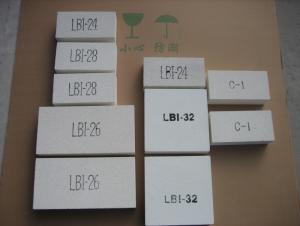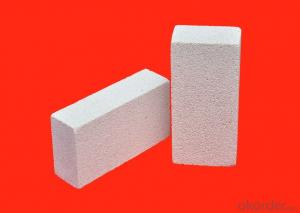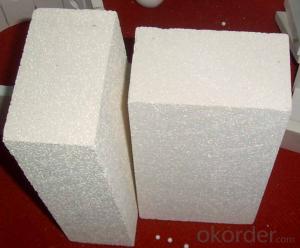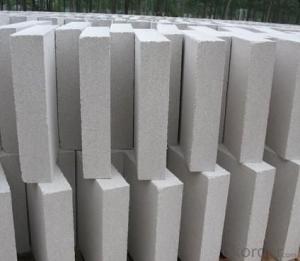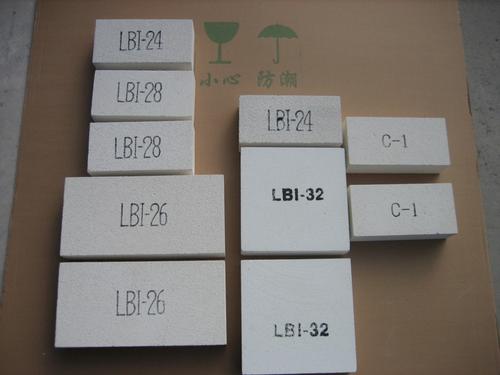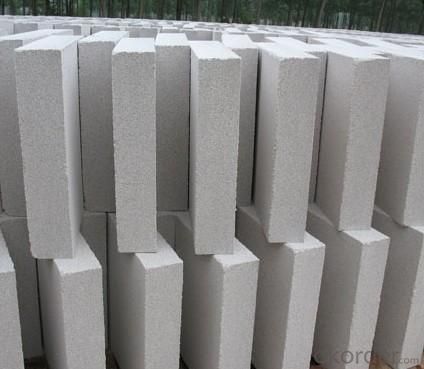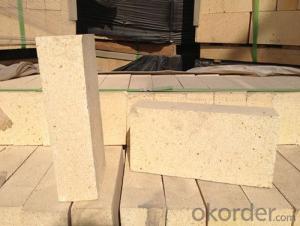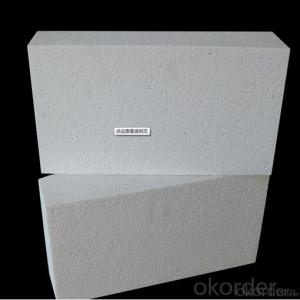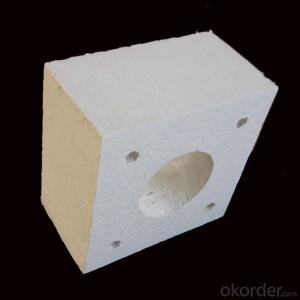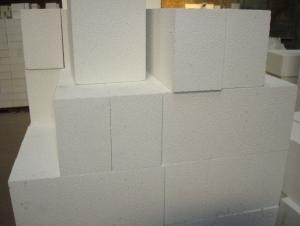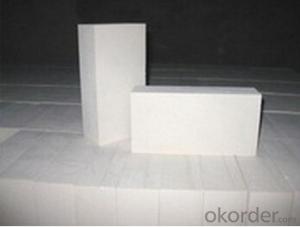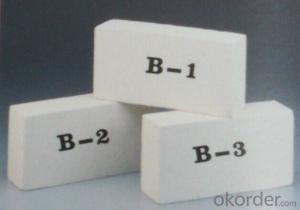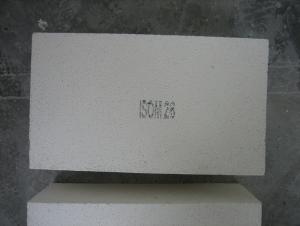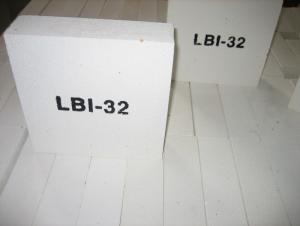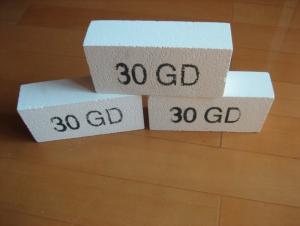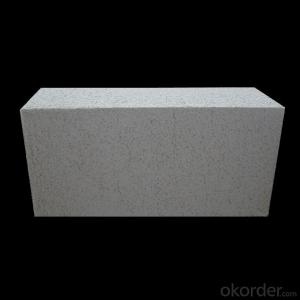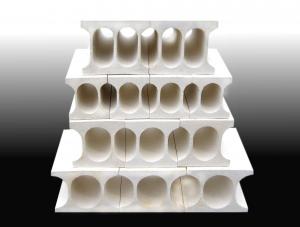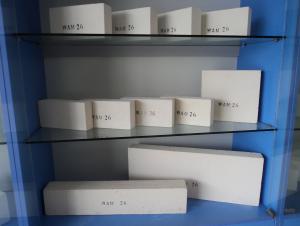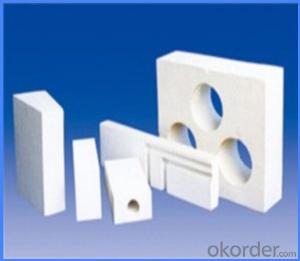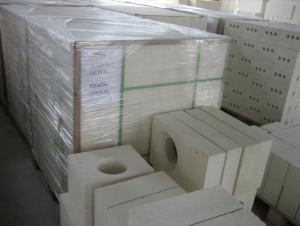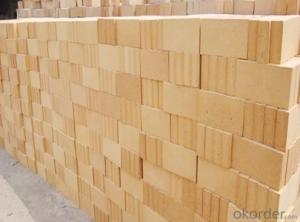Insulating Fire Brick - Refractory Mullite Insulating Refractory Brick JM 24
- Loading Port:
- Shanghai
- Payment Terms:
- TT OR LC
- Min Order Qty:
- 20 m.t.
- Supply Capability:
- 20 m.t./month
OKorder Service Pledge
OKorder Financial Service
You Might Also Like
Okorder series heat insulation brick
Okorder series thermal insulation brick is an effective, energy saving, low carbon, environmental protection advanced, according to the ASTM standard manufacturing products. Okorder series products have all kinds of materials in the field of metallurgy, industrial furnaces, aluminum, the best Li Ning petrochemical and insulation, electric power and glass ceramics. They can be used as part of an insulation or not to melt. Products have been widely used in the following furnace, achieved satisfactory results.
Application of heat preservation brick
Metallurgical Industry: blast furnace, hot blast furnace, heating furnace, etc..
Petrochemical Industry: ethylene cracking furnace, hydrogen furnace, the main furnace, heating furnace, etc..
Ceramic industry: roller kiln, kiln, etc..
Glass industry: glass furnace regenerator, etc.
Carbon industry: carbon furnace, etc..
Aluminum electrolysis industry: aluminum reduction cell, etc.
Other industries: tunnel kiln, shuttle kiln, etc..
Advantages of heat insulation brick
Low thermal conductivity: many air holes will bring good thermal insulation effect, energy saving.
High crushing strength: high crushing strength, volume stability.
Low heat storage: small heat storage, absorb more heat, energy-saving effect is obvious.
Chundu: High-speed Rail, low content of alkali metal impurities.
Accuracy: the size of the brick machining precision, cutting and grinding the special shape, speed up the brick.
Technical Data
ITEM | GJM30 | GJM28 | GJM26 | GJM23 |
Classification Temperature, ℉/℃ | 3000/1650 | 2800/1540 | 2600/1430 | 2300/1260 |
Bulk Density,g/cm³ | ≤1.0 | ≤0.9 | ≤0.8 | ≥0.5 |
Reheating Linear Change, % | ≤0.9 (1550℃,12 h) | ≤0.8 (1510℃,12 h) | ≤0.7 (1410℃,12 h) | ≤0.5 (1230℃,12 h) |
Al2O3 Content, % | ≥75 | ≥65 | ≥55 | ≥45 |
Fe2O3 Content, % | ≤0.5 | ≤0.6 | ≤0.7 | ≤1.0 |
Thermal Conductivity: | ||||
800℃, w/m.k | ≤0.39 | ≤0.37 | ≤0.35 | ≤0.18 |
1000℃, w/m.k | ≤0.43 | ≤0.41 | ≤0.39 | ≤0.20 |
1200℃, w/m.k | ≤0.48 | ≤0.46 | ≤0.43 | --- |
Insulating brick
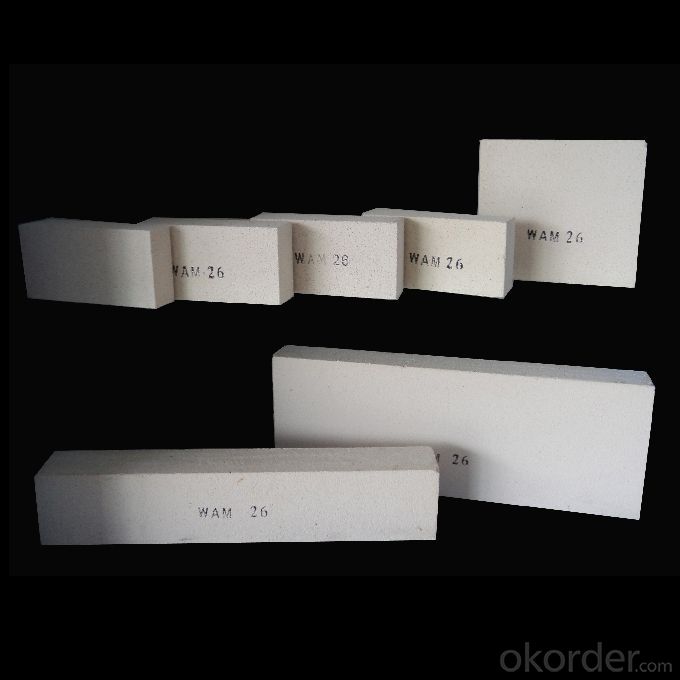
- Q: What are the different types of insulating fire bricks available?
- There are several different types of insulating fire bricks available, each with their own unique characteristics and applications. Some of the most common types include: 1. Lightweight Insulating Fire Bricks (IFBs): These bricks are made from lightweight materials, such as expanded clay, perlite, or vermiculite, which are blended with a binder to form a porous structure. They have excellent insulation properties and are commonly used in applications where high temperatures need to be maintained, such as in kilns or furnaces. 2. Mullite Insulating Fire Bricks: Mullite bricks are made from a combination of alumina and silica, resulting in a high-temperature resistant material. These bricks have excellent thermal shock resistance and are often used in applications where rapid heating and cooling cycles are involved, such as in glass manufacturing or incinerators. 3. Alumina Insulating Fire Bricks: As the name suggests, these bricks are made primarily from alumina, a high-temperature resistant material. They have excellent thermal conductivity and are often used in applications where high temperatures need to be maintained, such as in the iron and steel industry or in the production of ceramics. 4. Silica Insulating Fire Bricks: Silica bricks are made primarily from silica, a heat-resistant material. They have excellent thermal insulation properties and are often used in applications where high temperatures need to be maintained, such as in the construction of kilns or furnaces. 5. Calcium Silicate Insulating Fire Bricks: These bricks are made from a combination of calcium silicate and other insulating materials. They have excellent thermal insulation properties and are often used in applications where high temperatures need to be maintained, such as in the petrochemical industry or in power plants. Overall, the choice of insulating fire brick depends on the specific requirements of the application, including temperature resistance, thermal conductivity, and thermal shock resistance. It is important to select the appropriate type of insulating fire brick to ensure optimal performance and safety.
- Q: How do insulating fire bricks affect the overall insulation efficiency of a process?
- Insulating fire bricks significantly enhance the insulation efficiency of a process by providing a high level of thermal resistance. These bricks have low thermal conductivity and can withstand high temperatures, effectively minimizing heat transfer and reducing energy loss. This improved insulation helps maintain consistent and controlled temperatures, leading to increased energy efficiency and reduced fuel consumption in various industrial processes.
- Q: Can insulating fire bricks be used in rocket stoves?
- Yes, insulating fire bricks can be used in rocket stoves. Insulating fire bricks are designed to withstand high temperatures and provide excellent insulation, which makes them ideal for use in rocket stoves. They help to retain heat efficiently, ensuring better combustion and increased fuel efficiency in rocket stoves.
- Q: Are insulating fire bricks resistant to chlorine gas?
- Generally, insulating fire bricks possess resistance to chlorine gas. These bricks are composed of refractory materials that are formulated to endure high temperatures and combat chemical corrosion. As chlorine gas is highly reactive, it has the potential to corrode or harm various materials. However, insulating fire bricks exhibit a strong resistance to chemical attack, thereby making them appropriate for situations where exposure to chlorine gas is likely. It should be noted that the composition and quality of these bricks may differ, hence it is advisable to consult the manufacturer or supplier for precise details regarding their resistance to chlorine gas.
- Q: Are insulating fire bricks suitable for use in oil refineries?
- Insulating fire bricks do not typically suffice in oil refineries due to their inability to withstand the corrosive and abrasive nature of oil and its byproducts, despite being designed for high temperatures. Oil refineries involve a complex process of refining crude oil into various petroleum products, which often exposes materials to harsh chemicals and high temperatures. Instead, refractory bricks or castables specifically tailored to endure the corrosive and abrasive conditions present in the refining process are commonly employed. These refractory materials possess chemical resistance, high strength, thermal shock resistance, and the ability to withstand the extreme temperatures encountered during refining. Moreover, oil refineries necessitate materials that offer excellent insulation properties while also being durable and resistant to thermal stress. While insulating fire bricks possess good insulation properties, they may not possess the necessary durability and resistance to thermal stress demanded in the demanding environment of an oil refinery. Hence, it is advisable to utilize refractory bricks or castables that are designed specifically for oil refineries. These materials can provide the requisite resistance against chemicals, high temperatures, and thermal stress, ensuring the refinery operates safely and efficiently.
- Q: Are insulating fire bricks easy to cut and shape?
- Yes, insulating fire bricks are relatively easy to cut and shape. They are made from lightweight refractory materials such as ceramic fibers, which make them easier to handle compared to traditional fire bricks. Insulating fire bricks can be cut and shaped using common tools such as a saw, knife, or chisel. Their lightweight nature also makes them easier to maneuver and position, allowing for more precise cuts and shapes. Additionally, insulating fire bricks can be easily drilled or carved to create openings or specific designs if needed. Overall, their ease of cutting and shaping makes insulating fire bricks a convenient choice for various applications in construction, insulation, and fireproofing.
- Q: Can insulating fire bricks be used in the construction of combustion flues?
- Insulating fire bricks are indeed suitable for the construction of combustion flues. Their high temperature resistance makes them perfect for environments that require heat resistance. Combustion flues face extreme heat and gases produced during combustion, but insulating fire bricks can safeguard the flue structure from intense heat and prevent heat loss. Furthermore, these bricks have low thermal conductivity, which effectively insulates and retains heat within the flue. As a result, the combustion process becomes more efficient, reducing energy waste. Ultimately, incorporating insulating fire bricks into the construction of combustion flues can enhance the safety, efficiency, and durability of the flue system.
- Q: Do insulating fire bricks have a high electrical resistivity?
- Yes, insulating fire bricks typically have a high electrical resistivity. The high resistivity of these bricks helps to prevent the flow of electric current, making them suitable for insulation purposes in various applications.
- Q: Can insulating fire bricks be used in the construction of hot blast stoves?
- Indeed, it is possible to utilize insulating fire bricks in the fabrication of hot blast stoves. These bricks are specifically engineered to possess a low thermal conductivity, rendering them highly efficient in diminishing heat dissipation. In order to ensure optimal functionality, hot blast stoves necessitate the maintenance of elevated temperatures, a goal that can be accomplished through the utilization of insulating fire bricks, which effectively restrict heat transfer to the stove's external surface. Furthermore, these bricks exhibit commendable insulation properties, enabling energy conservation and enhancing the overall efficiency of the stove. Moreover, it is worth noting that insulating fire bricks are resistant to thermal shock, a crucial attribute in hot blast stove applications where frequent temperature fluctuations are common.
- Q: How do insulating fire bricks differ from regular fire bricks?
- Insulating fire bricks differ from regular fire bricks in terms of their composition and thermal properties. Insulating fire bricks are made from lightweight materials such as expanded clay, vermiculite, or perlite, which have high insulating properties. They have lower density and higher porosity compared to regular fire bricks, allowing them to retain heat better and provide superior insulation. Regular fire bricks, on the other hand, are made from dense materials like clay or silica, which provide better structural strength but have lower insulation capabilities.
Send your message to us
Insulating Fire Brick - Refractory Mullite Insulating Refractory Brick JM 24
- Loading Port:
- Shanghai
- Payment Terms:
- TT OR LC
- Min Order Qty:
- 20 m.t.
- Supply Capability:
- 20 m.t./month
OKorder Service Pledge
OKorder Financial Service
Similar products
Hot products
Hot Searches
Related keywords
